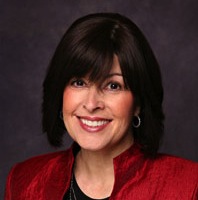 Five Accepted.com editors, including company president and founder Linda Abraham, attended the 6th annual conference of Association of International Graduate Admissions Consultants in Philadelphia in mid-June. We were graciously hosted by Wharton on day two, and on day one, we met with admissions directors from a dozen top MBA programs who told us about the latest changes in their own programs, from the applications process to career services. We were treated to these updates by admissions directors from Yale, Columbia, UNC, NYU, UT-Austin, Georgetown University, Tuck, Cornell, Rotman, and CEIBS (China Europe International Business School.) A subsequent post will cover our day at Wharton.
Five Accepted.com editors, including company president and founder Linda Abraham, attended the 6th annual conference of Association of International Graduate Admissions Consultants in Philadelphia in mid-June. We were graciously hosted by Wharton on day two, and on day one, we met with admissions directors from a dozen top MBA programs who told us about the latest changes in their own programs, from the applications process to career services. We were treated to these updates by admissions directors from Yale, Columbia, UNC, NYU, UT-Austin, Georgetown University, Tuck, Cornell, Rotman, and CEIBS (China Europe International Business School.) A subsequent post will cover our day at Wharton.
This is the second post containing highlights from the first day. Check out the first post for more about innovations in the MBA curriculum and the growth of part-time and virtual MBA programs.
Career Services – More Involved than Ever
• Many adcom directors emphasized the involvement of their Career Services staff, often beginning at the application stage. At NYU Stern, career counselors meet with applicants to assess how plausible their post-MBA career goals are and whether they feel the school can help them achieve those goals. When students matriculate, career services staff meet with them again to help them plan their academics for maximum success in achieving their goals.
• At UT Austin, adcoms also look for past evidence in applications of entrepreneurship.
• At Columbia, career orientation begins just four weeks into the first year, and the school is focusing more on case-based interviews and group projects, where people learn to solve a problem together. They also offer some “pre-MBA” days before matriculation during which students are offered self assessment workshops.
• Columbia’s popular Business Plan Competition also helps students earn seed funding and team up for entrepreneurship options. Associate Dean for Admissions Amanda Carlson said there is now a more bifurcated and less structured recruitment process, with an emphasis on early recruiting in the spring of the first year. This helps determine how well people are keeping up with industry intelligence, and students can adapt their spring courses accordingly.
• Similarly, at Georgetown, the school’s Career Ignition Series offers webinars and self- assessment intakes by mid-summer before matriculation. This emphasis on self-assessment and other preparation helps students present themselves to recruiters in the strongest possible light. Georgetown also has a career fair in conjunction with their sister school in Barcelona, held each year at Georgetown, with 150 recruiters.
The Admissions Process: Still Evolving
• Top MBA programs continually reassess their admissions process, trying to look for ways to get key information from applicants. At Cornell, video clips are the latest addition to the application process. Schools who are adding video clips hope to get a good feel for the students’ personalities and how well they communicate. Tuck has an optional video, knowing that many candidates are camera shy.
• Almost all schools are cutting the number of essays in their applications, as well as cutting the number of words per essay. Columbia has sliced one of their essays from 200 words to 100, because they felt people were not getting to the point fast enough. UT-Austin is adding a “getting to know you section” that allows applicants to answer in a Facebook style, with photos and short captions. While this was optional last year, 40% chose to answer it. One of Georgetown’s “essays” is a tweet, but candidates are invited to embed a link to a video if they choose.
• Cornell’s quirky “Write the Table of Contents to the story of your life question” remains a keeper this year: the adcom loves the creativity and variety they see, and makes the applications more exciting and interesting to read. Tuck, which offers an open interview, is keeping their three essays, because “it allows candidates to convey what they want to convey.”
• Not surprisingly, all the admissions directors agreed that campus visits, whenever possible, are one of the best ways applicants can assess their suitability for a particular program. The knowledge gained will also help them write their applications in a way that demonstrates familiarity and enthusiasm for the program. Reaching out to current students or alumni, and developing those relationships is also a great way to get information: ask alumni about their experiences, and if they had it to do over again, would they have made the same choice?
Letters of Recommendation – Surprisingly Controversial
The last panel of the day turned out to be surprisingly lively. Admissions consultants and admissions directors all agreed that the highly individualized nature of letter of recommendation (LOR) forms make this aspect of the application arduous and duplicative. Recommenders often find this a daunting task and often, punt the job to the applicant, which presents a dilemma for the candidate.
This form of LOR is also foreign – culturally speaking – to many of the recommenders being asked to write them. This lack of familiarity, in addition to language barriers, pushes many applicants into a situation where they hear from their recommender, “You write it, I’ll sign it.” Admissions directors feel this is ethically wrong, and also claim they can tell when applicants have written their own LORs. Worse: the suspicion that the LOR is written by the applicant damages an MBA candidacy. Accepted.com editor R. Todd King, who attended this year’s conference, observed, “It was a surprise to see just how much self-written recommendations count against a candidate - the schools do not take a neutral stance on this. Applicants truly need to find recommenders willing to write on their behalf.”
The admissions directors agreed that a simpler, perhaps even universal LOR form would help resolve this situation. But the takeaway for MBA applicants is that even if they are asked to write their own LORs, they do so at their peril. For information on how to handle this sticky situation, see our ebook, “MBA Letters of Recommendation that Rock.”

 By Judy Gruen, MBA admissions consultant since 1996 and author (with Linda Abraham) of MBA Admission for Smarties: The No-Nonsense Guide to Acceptance at Top Business Schools.
By Judy Gruen, MBA admissions consultant since 1996 and author (with Linda Abraham) of MBA Admission for Smarties: The No-Nonsense Guide to Acceptance at Top Business Schools.
Accepted.com's experienced admissions consultants can help you create the most impressive application possible with comprehensive packages, or provide targeted assistance from picking perfect programs to designing a dazzling resume, constructing engaging essays, or preparing for intense interviews…and more! Accepted.com has guided thousands of applicants to acceptances at top MBA programs since 1994 – we know what works and what doesn't, so contact us to get started now!
This article originally appeared on the Accepted Admissions Consulting Blog, the official blog of Accepted.com.
